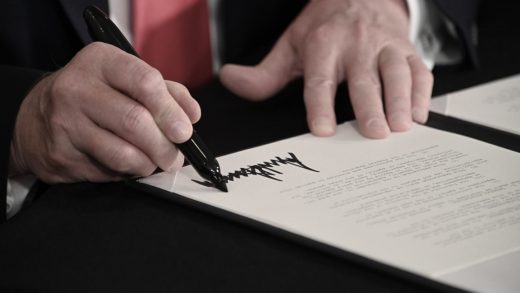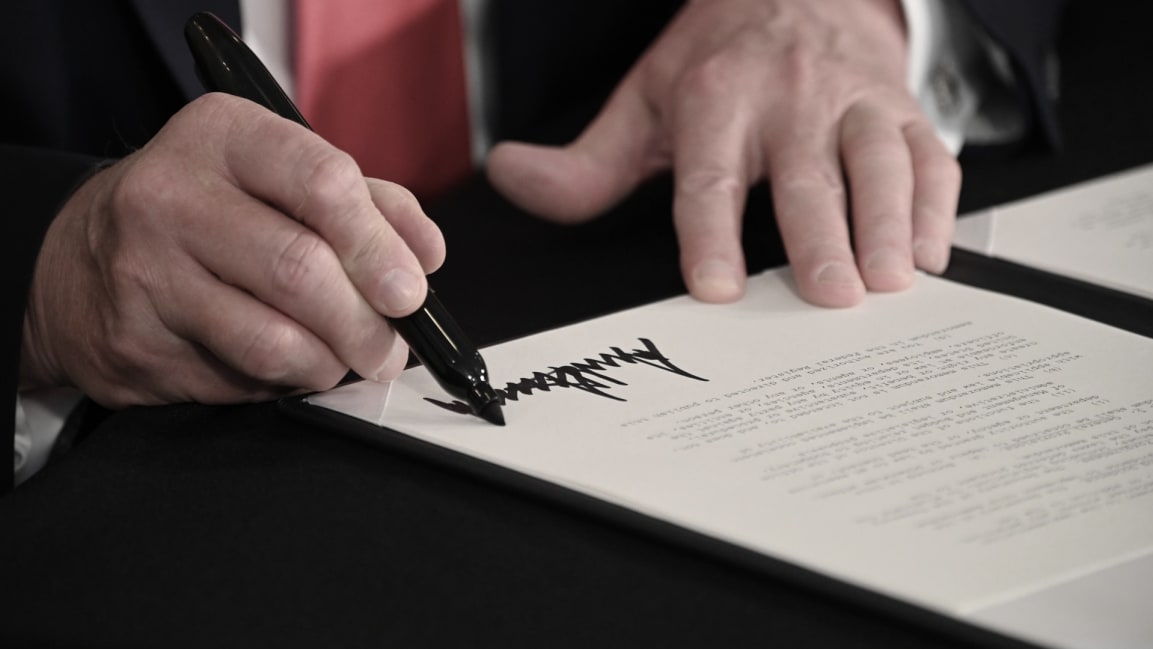How Trump’s executive order threatens anti-racist workplace trainings
Still, Mack is bracing for the potential fallout. The Department of Labor has opened a hotline for workers to report violations of the executive order—and Mack suspects one of their client’s employees will eventually use it. “It’s important that we never underestimate white supremacy,” Mack says. “You don’t have any control over how their fragility is going to be expressed.”
The executive order is hardly unexpected: For months, Trump has railed against the Black Lives Matter movement and protests against police brutality. During an address at the National Archives Museum in September, Trump set the stage for the executive order, denouncing critical race theory and the New York Times‘s 1619 Project as “toxic propaganda.”
The order puts forth an extensive list of violations but offers little clarity on which trainings are considered acceptable. To Mack and others in the equity and inclusion space, the order is a lucid expression of white fragility. “This executive order recognizes that creating environments where Black people and other people of color can contribute and participate fully enables us to do our best work, which some people feel threatens their advantage,” says Mimi Fox Melton, acting CEO of Code2040, a nonprofit pushing for greater Black and Latinx representation in tech. “And obviously, the executive order is another attempt to appeal to white supremacists in advance of the November election—and most of us recognize it as more dog whistling for racists.”
The order is especially dissonant against the backdrop of a sweeping racial justice movement and a global pandemic that has disproportionately impacted communities of color. This summer, after years of halting progress, companies across industries were finally making serious commitments to equity and inclusion work. “We got an unprecedented inflow of interest in partnering with us,” Melton says. “We had to bring on three extra people to help us even respond to emails and have conversations with companies who were interested in partnering. It was unbelievable.”
Michelle Kim, the cofounder and CEO of Awaken, saw a 1,000% increase in requests year over year—so much so that she created a spreadsheet of Black-owned DEI organizations and Black consultants to redirect businesses that reached out. “That juxtaposition is so important to understanding what’s happening right now,” says Joelle Emerson, the founder and CEO of Paradigm, a diversity and inclusion strategy firm. “Organizations were having internal conversations at unprecedented levels about really difficult themes.”
Some companies are unaffected by the executive order because they don’t have federal contracts or grants. Others may be unfazed—or even emboldened—by it. But it has already made its mark: This month, the Justice Department paused all diversity and inclusion training for all employees and managers.
In a recent letter, more than 150 business groups and nonprofits urged Trump to withdraw the executive order, noting that companies have already dialled back their diversity and inclusion work to comply with it. Microsoft is being investigated by the Labor Department over an initiative to increase Black representation—particularly in leadership—by 2025. And the executive order has already cost diversity consultants clients or, at a minimum, diverted their attention to close readings of the order.
“We’re trying to communicate a few things to organizations,” says Emerson, who has lost a client due to the order. “At a fundamental level, we think this order is unconstitutional, and we think it is fascist propaganda. My background is as a civil rights lawyer, and I do not believe this order is constitutional. I believe its whole purpose is to recast and redefine what diversity training even is.”
All the consultants I spoke to echoed this point—that most of their diversity and inclusion work doesn’t violate the terms of the executive order. “No self-respecting diversity consultant would go up in front of a room and say, a person of a certain race is inherently superior over others,” Kim says. “That is exactly what we’re trying to not do.” But a memo that accompanied the order also calls into question specific terminology, which Kim believes borders on censorship. (After the order was issued, Kim was asked not to use the term “white privilege” by a client—a request she refused to comply with.)
Some companies seem to be interpreting the order more broadly than they should, Emerson says, in part due to the memo’s recommendation to do a keyword search for phrases like “intersectionality” and “unconscious bias,” to suss out trainings that might be in violation of the order. She is encouraging her clients to interpret the order as narrowly as possible and, if they are in a position to violate the order, to be brave and not compromise on their values.
“There shouldn’t be any controversy about us talking about white privilege,” Kim says. “It shouldn’t be this divisive for us to be able to talk about the reality of things. Somehow us staying the course and talking about white supremacy is considered civil disobedience—that’s where we’re at as a country.”
That’s exactly the point of the order—to discourage companies from engaging with this work altogether or risk legal repercussions, Mack says. “For me, it just seems kind of like, ‘Let’s do something that could potentially feel really scary to people who do anti-racism work and are engaged in talking about whiteness at work and power and privilege,” Mack says. “And let’s see if potentially, this scare tactic can get them to stop engaging in this work.’”
The order could also directly impact the livelihood of equity and inclusion leaders—the very people who were in high demand mere months ago. “I think about the Black and Latinx workers whose jobs were focused on racial equity who now are out of a job and going without healthcare during a pandemic or are concerned that their work won’t be funded,” Melton says. And consultants like Kim have already seen a noticeable increase in online harassment and abusive messages following the order. One person even took the trouble of sending her a letter by mail.
Some people might write off the executive order as one of many petty grievances aired by the Trump administration. But if the executive order is an equal and opposite reaction to a collective commitment to anti-racism and equity work, so too is the culture war in Silicon Valley. In response to the Black Lives Matter movement and conversations around diversity and equity, companies like Coinbase have chosen to opt out altogether, effectively silencing anything that qualifies as political speech in the workplace.
“This really emboldens those perspectives,” Kim says of the executive order. “Not only is the executive order legitimizing these beliefs, it’s actually giving it so much more power to actually be acted on. It’s giving them a legal ground to stand on to squash more nuanced and complex and accurate perspectives.”
For companies that want to bow out of racial equity work, Melton says, the order is an invitation to do so. “The past four years, companies that had only supported racial equity because it was the cool thing under the Obama administration looked for any reason to abandon those efforts,” she says. “And I think that this executive order serves as more cover for them to continue to distance themselves. Because they can say that diversity work impacts our bottom line.”
But she doesn’t necessarily see that as a bad thing. “I actually look at it as a bit of a relief,” she says. “When companies are public about their lack of interest in equity, like the Coinbases of the industry, it means that [people of color] can avoid working at the places that are hostile to their survival. They’re going to pay the price for that eventually, as the U.S. becomes majority people of color—but at least it’s not going to be on our backs.”
(12)



